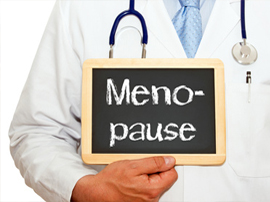By Dr. Chauncey Crandall
The role of estrogen in heart health has become somewhat controversial in recent years. Previously, estrogen was thought to be protective of the heart in women, because women generally develop heart disease about 10 years later than men. This coincides with menopause, when a woman’s estrogen levels decline dramatically. By age 65, a woman’s risk of heart disease is equal to that of men.
When female estrogen goes down, harmful LDL cholesterol increases in the bloodstream and “good” HDL cholesterol decreases. This leads to a buildup of fat in the arteries that increases the risk of heart attack and stroke.
Based on that evidence, hormone replacement therapy (HRT) was considered to be standard treatment during menopause as recently as 10 years ago. Besides relieving the outward symptoms of menopause, such as hot flashes and insomnia, it was thought to keep cholesterol under control and have a positive effect on blood vessels and the heart.
However, that thinking began to change in the late 1990s, when additional study results of HRT started coming in. For instance, the Heart and Estrogen-Progestin Replacement Study (HERS) followed more than 2,700 women with existing heart disease; during the first year of HRT, women in the study had a 50 percent increase in heart attack and stroke, according to the Journal of the American Medical Association.
The Women’s Health Initiative (WHI), a study of 160,000 women, showed similar results. The part of the study that involved HRT with estrogen and progesterone was even halted in 2002 because the hormones were causing an increase in heart attacks, strokes, and blood clots in the legs and lungs.
In 2004, the estrogen-only HRT study was stopped because it did not reduce the risk of heart attack, but increased the incidence of stroke and blood clots, according to a report from The Cleveland Clinic. There’s no getting around the fact that estrogen levels decline with age. Each woman should work closely with her personal physician to determine whether to undertake hormone therapy to bring those levels back up. Other factors, like a history of blood clots or cancer, must be considered before increasing these hormones.
For women with premature menopause, hormone therapy is usually necessary. Women who go into menopause before the age of 40 have a different set of health risks than women who reach menopause at the average age of 50. One of those risks is a higher incidence of heart disease.
Hormone therapy does seem to reduce that risk when started soon after menopause in younger women. Older women with severe menopausal symptoms should work with a physician to take the lowest effective dose only as long as needed.
For both men and women, hormone balance is key. Be aware of environmental estrogens that might lead to overload in your body. Besides hormones and pesticides in food, other sources are things that get into the water supply. Switch to biodegradable laundry detergents. Always recycle old cell phones, computers, and printers rather than put them in the trash. That will help control the release of heavy metals that turn into environmental estrogens.

